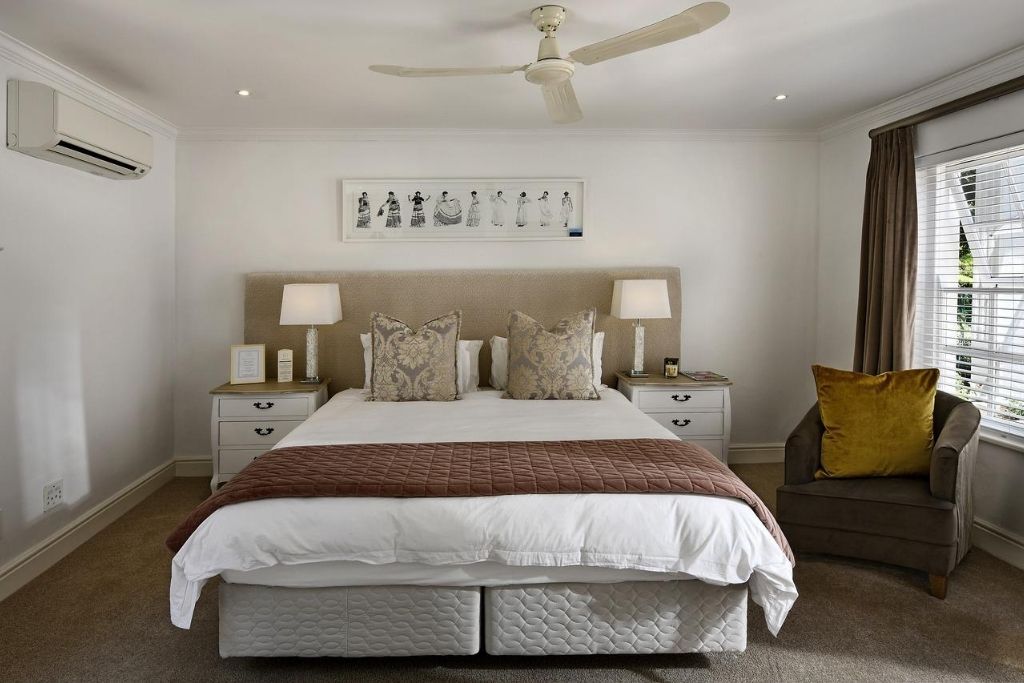Most homeowners know the basics of what they need to kit out their bedroom. Bed, bedside table, dressers, bedding, etc. And while we’re talking about bedroom essentials, one that we get asked all the time is 'what's the deal with the top sheet?'
We don't question the bedding basics of pillowcases and duvet covers, and even fitted sheets have their well-earned place. So, where do top sheets fit into the picture? Are they a practical and essential part of your bedding set, or an unnecessary extra bit of laundry to worry about?
Top sheets have been fading in and out of fashion over the years, and there’s still debate over whether their benefits outweigh their drawbacks. Here’s the scoop on what a top sheet is and why you should — or shouldn’t — get one.

What is a Top Sheet On a Bed?
In the simplest terms, a top sheet is an oversized flat sheet that lies between you and your duvet, comforter, or blanket. It forms a protective barrier so that your skin comes into contact only with the top sheet, meaning that your upper bedding stays cleaner for longer.
When you ask yourself, “what is a top sheet used for?”, this is its primary purpose. After all, washing cumbersome comforters is an effort few people enjoy. It’s much easier to simply wash a light top sheet.
You should wash your top sheet whenever you wash your bottom sheet and pillowcases — on average every four to seven days. This ensures a healthy and clean sleep environment for you and your skin. With the protection the top sheet offers, you only need to lug your upper bedding into the laundry bin every two to four weeks.

While many people choose to use a bottom fitted sheet or flat sheet only, there are advantages to using a top sheet. However, there are some perceived disadvantages as well. Let’s look a little closer at the pros and cons of using a top sheet in your bed-making routine.
Top Sheets in Bed | Pros
There are many benefits to using a top sheet. For one thing, it’s an aid in temperature control. While in bed, a top sheet can act as an extra insulating layer by trapping warm air to keep you toasty without adding too much bulk.
Similarly, in warmer weather, you can kick back the duvet and simply cover up with the thin top sheet, helping you keep cool while still being covered.

A top sheet can also protect sensitive skin. Not all duvet covers are created equally, and a soft satin top sheet may be just the thing to give you that luxurious softness without having to buy an entire expensive duvet set.
There’s also the previously mentioned factor of protection. Humans shed thousands of skin cells every night, not to mention the bacteria that can pass from our bodies to our linen. Without a top sheet to protect your comforter or duvet, that means washing your entire set of bedding more frequently.
The old skin particles and bacteria can also make their way into your duvet inner as well, creating a potential health hazard if you only intend to wash your duvet cover.
Top Sheets in Bed | Cons
Because top sheets in bed come into direct contact with your skin, it’s best to invest in quality. In this regard, they can be an added expense, especially when good-quality bed linen tends to be on the pricier side.
Restless sleepers may also get annoyed as they are more likely to get tangled up in the extra layer when they toss and turn during the night. In such circumstances, a top sheet can become restricting by allowing less freedom of movement.

These sheets often inevitably get bunched up at the bottom of the bed beneath the duvet, in which case they’re not fulfilling their main purpose. This can make mornings a little trickier and time-consuming when attempting to make your be — with an extra layer to fish out, straighten out, and tuck into submission.
If you have a busy morning schedule, it could become a slight nuisance. The biggest argument against them is that they’re unnecessary if you tend to wash all of your bed clothes on a regular basis regardless.
Top Sheets | Does Material Matter?
There’s a hot debate concerning satin versus organic cotton for the optimal bedding experience, but top sheets can come in various types of other materials as well. These include percale, cotton, sateen, hemp, and linen, to mention a few.
The type of material you choose should take into account environmental factors such as your climate and skin sensitivity. This is because different materials have varying levels of breathability and therefore heat retention. After all, no one wants to wake up a sweaty mess because their linen doesn’t breathe well.
100% organic cotton is one of the best choices for your linens, not only because it’s better for the environment, but also because it’s better for your skin. You’ll find only the best quality 300-thread count organic cotton bedding at Delilah Home. It’s GOTS certified as 100% organic, and available in trendy neutral colors to suit any color scheme.

Another great contender emerging onto the market is hemp. It’s a naturally breathable fabric that makes for wonderful temperature regulation. Although it’s 50% thicker than other fabrics, it keeps you cool in summer and warm in winter. It has all the softness of cotton but it’s three times stronger, so your will bedding lasts longer.
Our range of 100% organic hemp bedding is a worthwhile indulgence.
What are Top Sheets | Final Thoughts
At the end of the day, top sheets aren’t for everyone. It’ll depend on your sleeping habits and the amount of time you have to dedicate not only to laundry but to making the bed as well. To many, the benefits of a top sheet outweigh the potential issues that can accompany them.
If you use a top sheet regularly, you can quickly learn how to fold and tuck them and avoid the dreaded bunching and tangling. If you find they’re just not worth the hype though, it’s perfectly fine to simply focus on finding the best bed linens for your standard bedding.
Browse through our article on the best fabrics you can choose to guarantee a comfortable night’s sleep.




Leave a comment
This site is protected by hCaptcha and the hCaptcha Privacy Policy and Terms of Service apply.